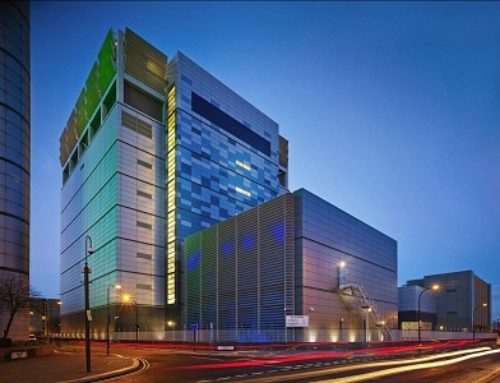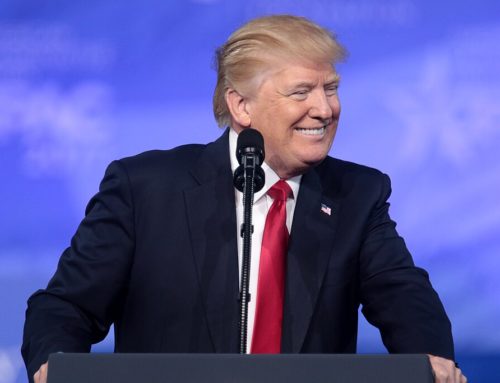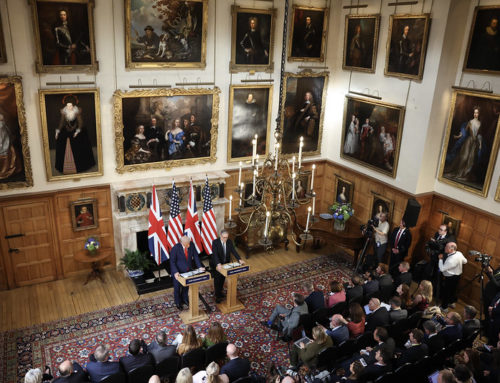1. India-EU Free Trade Negotiations
As the world continues to grapple with economic uncertainties, the spotlight once again turns to the realm of international trade. This time, the focus is on the upcoming eighth round of Free Trade Talks between India and the European Union (EU), scheduled for the 23rd of June. This article aims to shed light on the significance of these talks, the potential impact on both economies, and the broader implications for global trade dynamics.
The India-EU Free Trade Talks represent a pivotal moment in the economic relationship between two of the world’s most significant economies. With the EU being India’s largest trading partner and India being the EU’s ninth-largest trading partner, the stakes are high, and the outcomes of these talks could reshape the economic landscapes of both regions.
Stay tuned as we delve into the intricacies of these negotiations, explore the potential hurdles, and discuss the opportunities that lie ahead. The eighth round of talks is not just a meeting; it’s a step towards a more integrated and prosperous global economy.
Historical context
India was among the first countries to establish diplomatic relations with the European Economic Community in 1962. Following the EU-India 1994 Cooperation Agreement, the parties built a multi-tiered institutional architecture of cooperation, and eventually upgraded their relationship to a ‘Strategic Partnership’ in 2004.
The negotiations for a Free Trade Agreement (FTA) between India and the EU, officially called the Bilateral Trade and Investment Agreement (BTIA), kicked off in 2007. However, after five years of negotiations spanning 17 rounds, a meaningful consensus could not be reached due to technical disagreements from both sides.
The talks stalled in 2013 as both sides failed to reach an agreement on key issues, including customs duties on automobiles and spirits, and the movement of professionals. The negotiations languished for over seven years and went through 15 rounds.
On 8 May 2021, the EU and Indian leaders agreed to resume negotiations for a ‘balanced, ambitious, comprehensive and mutually beneficial’ trade agreement. They also decided to launch separate negotiations on an investment protection agreement and an agreement on geographical indications.
In political terms, from the EU’s perspective, the free trade agreement (FTA) with India will be its first with an emerging economy. From India’s perspective, it will boost Prime Minister Narendra Modi’s “Make in India” campaign and his ambition to establish India as a regional leader and global manufacturing centre.
The upcoming eighth round of talks is a step towards a more integrated and prosperous global economy. It’s a pivotal moment in the economic relationship between two of the world’s most significant economies.
Potential hurdles
The potential hurdles in the India-EU Free Trade Talks are numerous and complex, reflecting the diverse interests and priorities of the two economies. Here are some key challenges that could arise during the negotiations:
1. Tariffs on Certain Goods:
The EU has demanded significant duty cuts in automobiles, wine, spirits, and dairy products. These sectors are sensitive for India due to domestic industry considerations and could pose a significant hurdle in the negotiations.
2. Movement of Professionals:
Another sticking point in the negotiations has been the movement of professionals. India has been seeking a more liberal regime for the temporary movement of professionals such as IT experts, engineers, and managers.
3. Intellectual Property Rights (IPR):
The EU has been pushing for a strong intellectual property regime. This could be a potential hurdle as India might have concerns about the impact on its generic pharmaceutical industry.
4. Non-Tariff Barriers:
India has persistently sought relaxation of the EU’s stringent rules in this domain. Deliberations will likely encompass trade barriers pertaining to services and various non-tariff obstacles hindering the flow of goods across sectors such as agriculture, pharmaceuticals, engineering, and electrical items.
5. Rules of Origin:
The rules of origin procedures are yet to be agreed upon. This could be a potential hurdle as it determines which goods can benefit from the preferential tariff treatment under the FTA.
These are just a few of the potential hurdles. The negotiations will require a delicate balancing act, taking into account the economic, political, and social realities of both India and the EU. The outcome of these talks could have far-reaching implications for the future of trade between these two major economies.
Opportunities
1. Balanced Tariff Reductions:
Both parties could agree on a balanced reduction of tariffs in sectors of mutual interest. For instance, the EU could reduce tariffs on textiles and agricultural products from India, while India could lower tariffs on automobiles and wines from the EU.
2. Mutual Recognition of Professional Qualifications:
This could facilitate the movement of professionals between India and the EU. It would benefit the EU by addressing skill shortages in certain sectors, and benefit India by providing opportunities for its skilled workforce.
3. Cooperation on Intellectual Property Rights (IPR):
India and the EU could work together to strengthen IPR protection while ensuring that it does not adversely affect India’s generic pharmaceutical industry. This could be achieved through a balanced approach that respects the interests of both parties.
4. Addressing Non-Tariff Barriers:
Both parties could work towards reducing non-tariff barriers through regulatory cooperation, harmonisation of standards, and mutual recognition agreements.
5. Investment Protection Agreement:
A separate investment protection agreement could encourage more cross-border investments and provide legal certainty for investors from both sides.
6. Cooperation in Services Sector:
Given the importance of the services sector in both economies, increased cooperation in this area could be mutually beneficial. This could include areas like IT, financial services, and tourism.
7. Sustainable Development:
Both parties could commit to ensuring that the trade agreement contributes to sustainable development, including labour rights and environmental protection.
These potential solutions require compromise and mutual understanding. The success of the negotiations will depend on the willingness of both parties to work towards a balanced and mutually beneficial agreement. It’s important to remember that trade agreements are not just about economics, but also about strengthening political and cultural ties.
2. China, Japan and South Korea Trade Pact: fact or fiction?

Jezael Melgoza via Unsplash
In the ever-evolving landscape of global economics, a new possibility has emerged that could redefine the economic dynamics of East Asia. A proposed free trade pact between China, Japan, and South Korea is poised to create the strongest economic ties yet seen among these three powerhouses. This tripartite agreement, if realised, could usher in a new era of prosperity and cooperation, marking a significant shift in the region’s economic paradigm. However, the question remains: Can they make it happen? This article delves into the complexities, challenges, and potential benefits of this ambitious endeavour, exploring the factors that could influence its successful implementation.
Obstacles
Achieving a free trade pact between China, Japan, and South Korea faces several significant obstacles:
1. Geopolitical Tensions:
The region is rife with geopolitical tensions that could potentially derail negotiations.
2. Ideological Differences:
Analysts suggest that pragmatism must prevail over ideology for the deal to be closed.
3. Protectionism:
There are concerns about protectionism and the impact of globalisation.
4. Agriculture:
According to a sectoral study, agriculture is seen as a major stumbling block to finalising the pact. Concerns include not only the loss of market share, but also intellectual property rights on agriculture-related technology and breeds, food safety, and observing quarantines.
These challenges need to be addressed for the successful implementation of the free trade pact. However, the potential benefits of stronger economic ties could provide the necessary motivation for these countries to overcome these obstacles.
Precedents
There are historical precedents for such a tripartite agreement. The China-Japan-South Korea Free Trade Agreement was proposed in 2002. Negotiations on the agreement were set in motion in 2012. At the time, the three nations made up to 19.6% of the world’s economy. The first official talks on the matter were held in Seoul from 26–28 March 2013. Further talks were held in China and Japan throughout 2013.
The trilateral summits between China, Japan, and South Korea date back to the fallout from the 1997 Asian financial crisis, which devastated businesses across the region and prompted moves toward greater economic integration.
However, progress has been slow due to various factors, including Japan’s colonial history on the Korean Peninsula and other disruptive factors such as nationalist sentiments and maritime disputes.
Despite these challenges, the three countries have continued to hold rounds of talks, with the sixteenth round of talks held in Seoul on November 27 to 29, 2019. The potential benefits of stronger economic ties could provide the necessary motivation for these countries to overcome these obstacles.
It’s important to note that all three countries are members of the Regional Comprehensive Economic Partnership, which took effect in 2022. This existing trade pact could serve as a foundation for their proposed tripartite agreement.
3. UAE – Korea trade negotiations

Cait Ellis Unsplash
In the dynamic world of global commerce, the Comprehensive Economic Partnership Agreement (CEPA) between the United Arab Emirates (UAE) and South Korea has ushered in a new era of economic collaboration. This article delves into the remarkable trade boom spurred by this landmark deal, highlighting the mutual benefits and the promising opportunities it presents for both nations.
The CEPA deal, a testament to the robust diplomatic ties and shared economic vision between the UAE and South Korea, has catalysed a significant upsurge in trade activities. It serves as a beacon of successful international cooperation, demonstrating how strategic partnerships can drive economic growth and prosperity in the 21st century.
Join us as we explore the intricacies of this deal, the sectors it impacts, and the transformative effect it has on the UAE-Korea trade landscape. We will also shed light on how this agreement sets the stage for an exciting new chapter in their bilateral relations, fostering innovation, investment, and sustainable development.
CEPA
Comprehensive Economic Partnership Agreement (CEPA) between the UAE and South Korea:
The CEPA deal was signed during President Sheikh Mohamed bin Zayed Al Nahyan’s visit to South Korea. This agreement marks South Korea’s first free trade pact with an Arab nation². The signing ceremony took place during a summit in Seoul attended by the UAE President Sheikh Mohamed bin Zayed and South Korean President Yoon Suk Yeol.
Under the CEPA, both nations will eliminate tariffs on more than 90 percent of imports over time. Notably, the UAE will gradually abolish import duties on automobiles over the next decade, while South Korea will remove tariffs on crude oil imports. This is expected to increase South Korea’s crude oil imports from the UAE.
The UAE is South Korea’s second-largest Arab trade partner and the 14th largest globally, accounting for 20 percent of South Korea’s trade with the Middle East. By the end of 2022, South Korea’s investments in the UAE had reached $2.2bn, while the UAE’s investments in South Korea stood at $578m.
During the summit, several other memorandums of understanding (MoUs) were signed, covering areas such as climate change, energy, infrastructure, nuclear power, intellectual property, defence, and technology. One notable agreement involved South Korean shipbuilders constructing at least six liquefied natural gas (LNG) carriers for the Abu Dhabi National Oil Company (ADNOC), valued at approximately $1.5bn.
Intricacies
The Comprehensive Economic Partnership Agreement (CEPA) between the UAE and South Korea is a complex and multi-faceted deal with several key aspects:
1. Elimination of Tariffs:
The CEPA eliminates tariffs on over 90% of goods and services, simplifying cross-border trade. Notably, the UAE will gradually abolish import duties on automobiles over the next decade, while South Korea will remove tariffs on crude oil imports. This is expected to increase South Korea’s crude oil imports from the UAE.
2. Trade Growth:
The deal is expected to spur unprecedented trade growth between the two nations. In 2023, bilateral trade between the UAE and Korea reached $21 billion, solidifying the UAE’s position as South Korea’s second-largest trade partner.
3. Role of Jebel Ali Free Zone (Jafza):
Jafza has become a vital hub for South Korean businesses in the region, home to industry giants such as Samsung, LG, KIA, and Hyundai. It plays a crucial role in facilitating trade and investment between the two countries.
4. Expansion of Bilateral Relations:
The economic relationship between the UAE and South Korea has flourished over the past four decades, evolving into a robust partnership that spans multiple industries. The CEPA is the latest milestone in this journey, designed to simplify trade further and remove barriers, thus enhancing bilateral economic engagement.
5. Additional Memorandums of Understanding (MoUs):
During the summit, several other MoUs were signed, covering areas such as climate change, energy, infrastructure, nuclear power, intellectual property, defence, and technology. One notable agreement involved South Korean shipbuilders constructing at least six liquefied natural gas (LNG) carriers for the Abu Dhabi National Oil Company (ADNOC), valued at approximately $1.5bn.
These intricacies of the CEPA deal highlight the strategic importance of this agreement in fostering economic collaboration and strengthening the bilateral ties between the UAE and South Korea.
Sectors
The Comprehensive Economic Partnership Agreement (CEPA) between the UAE and South Korea impacts several key sectors:
1. Energy:
The CEPA facilitates cooperation in the energy sector, including crude oil and natural gas. Notably, South Korea will remove tariffs on crude oil imports, which is expected to increase South Korea’s crude oil imports from the UAE.
2. Automotive:
The UAE will gradually abolish import duties on automobiles over the next decade. This is expected to boost the automotive trade between the two countries.
3. Electronics:
The electronics sector, with industry giants such as Samsung and LG operating out of the Jebel Ali Free Zone (Jafza), is another key area of focus.
4. Healthcare:
The CEPA is expected to enhance joint research and knowledge exchange in the healthcare sector.
5. Advanced Manufacturing and Technology:
The agreement will reinforce East-West supply chains and facilitate two-way Foreign Direct Investment (FDI) flows, particularly in the fields of advanced manufacturing and technology.
6. Food Security:
The CEPA will also enhance cooperation in the area of food security.
These sectors are expected to see significant growth and increased bilateral cooperation as a result of the CEPA deal.
4. Fruit & vegetable trade mission to Poland

Janusz Maniak via Unsplash
In an era of increasing globalisation and interconnected markets, the importance of international trade cannot be overstated. This article focuses on a recent trade mission that aimed to introduce overseas exporters to the burgeoning Polish market. Poland, with its strategic location in the heart of Europe and robust economic growth, presents a wealth of opportunities for businesses looking to expand their global footprint. This trade mission served as a bridge, connecting overseas exporters with potential partners and customers in Poland, and paving the way for mutually beneficial business relationships. Read on to explore the intricacies of this mission, the opportunities it unveiled, and the potential it holds for the future of international trade.
Mission details
The trade mission to introduce overseas exporters to the Polish market is scheduled to take place on 19-20 September 2023. The mission will start with retail visits and a networking dinner on Tuesday, 19 September, followed by a full-day matchmaking event at the Fresh Market B2B Meeting and Trade Show 2023 on Wednesday, 20 September. This event is designed to promote flower and plant export toward Polish retail. It’s a great opportunity for companies active in the sustainable production of floricultural products, floriculture exporters, or both, to do business with Polish retail customers.
1. Target Audience:
The mission targeted all fruit and vegetable producers, but it recognised that non-EU countries face the biggest challenges in entering the Polish market directly. As a result, there was increased interest from South America, South Africa, and Morocco.
2. Mission Leadership:
The trade mission was led by active players in the fruit and vegetable market in Poland and Eastern Europe. They shared their knowledge with companies to help them enter the market more quickly, reduce costs, and potential risks.
3. Post-Mission Support:
After the trade mission, Greenco remained available to companies in terms of recommendations, providing them with market information and more.
4. Meeting Arrangements:
The mission arranged meetings with buyers who were genuinely interested in cooperation.
5. Reglobalisation

The New York Public Library via Unsplash
In the face of rising nationalism and geopolitical tensions, many have begun to question the future of globalisation. The narrative of an increasingly interconnected world seems to be giving way to a discourse of division, isolation, and self-interest. However, this perspective overlooks a crucial development: the world isn’t deglobalising; it’s reglobalising.
1. Economic Integration and Fracturing:
The current pattern of economic integration and fracturing across different economies and sectors is best described as ‘reglobalisation’. Globalisation is far from finished, but is changing in nature through countries’ emphasis on stronger regional links and the formation of economic blocs for sensitive and strategically important sectors.
2. Trade Policy:
Trade policy has an important role to play in underpinning the positive aspects of a reglobalised world and in balancing geopolitical competition and cooperation, not just through coordinated efforts to strengthen supply-chain resilience, but also in enabling countries worldwide to benefit from the twin transitions to green and digital economies.
3. Global Production Networks:
Notwithstanding supply-chain volatility, global production networks and trade have been resilient, even through the pandemic.
4. Technological Globalisation:
The advent of new technologies—particularly in the fields of communication and transportation—has led to the adoption of liberal trade policies by countries around the world.
5. Cultural Globalisation:
The adoption of foreign loanwords by a language is an example of cultural globalisation.
6. Financial Globalisation:
The flow of investment across borders is an indicator of financial globalisation.
Challenges
1. Geopolitical Tensions:
The rise of geopolitical tensions can lead to fears that globalisation exposes countries to excessive risks. These fears can increase pressures to unwind trading relationships and turn to unilateral policies, leading to a process of fragmentation.
2. Rising Inequalities:
Reglobalisation can exacerbate existing inequalities, both within and between countries. This can lead to social unrest and political instability.
3. Climate Change:
The acceleration of global economic activity can contribute to environmental degradation and climate change. Addressing these issues requires international cooperation and sustainable practices.
4. Protectionist Policies:
The rise of protectionist policies in various parts of the world can lead to a slowdown in international trade, supply chain bottlenecks, and a retreat from global cooperation.
5. Distribution of Benefits and Costs:
Globalisation also has attendant challenges and risks, manifested by imbalances in the distribution of its benefits and costs.
6. Corporate Deglobalisation:
While companies need to adjust for heightened geopolitical tensions, they should not abandon global strategies. Corporate deglobalisation, in fact, could be a riskier path than making focused adjustments to mitigate geopolitical risks.
6. Clean energy manufacturing investment
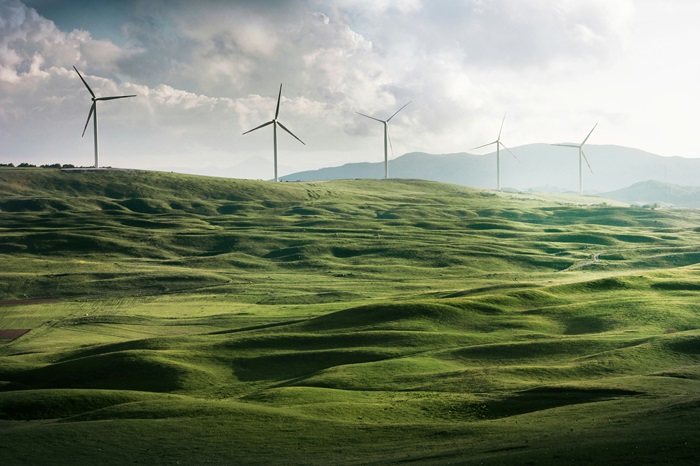
Appolinary Kalashnikova via Unsplash
In the ever-evolving landscape of global economics, the concept of investing in places historically left behind has emerged as a compelling narrative. This article delves into the transformative potential of Foreign Direct Investment (FDI) in U.S. clean energy manufacturing, a sector that holds immense promise for sustainable growth and development.
The focus is on regions that have been traditionally overlooked or underinvested, yet hold untapped potential. By channelling FDI into clean energy manufacturing in these areas, we can stimulate economic growth, create jobs, and foster innovation, all while contributing to environmental sustainability.
This exploration is not just an academic exercise, but a call to action for policymakers, investors, and stakeholders to reconsider how and where we invest, and the profound impact our investment decisions can have on communities and the environment.
Clean energy FDI
Key statistics on Foreign Direct Investment (FDI) in clean energy manufacturing:
– The United States has experienced a dramatic increase in clean energy manufacturing investment, with regional economic development organisations and federal initiatives playing key roles.
– Since President Biden took office, private companies have announced $866 billion in investment commitments in strategic industries such as semiconductors, EVs, and clean power.
– Focusing on just clean energy manufacturing technologies, a joint Rhodium-MIT database estimates new announcements of clean energy manufacturing investments in 2023 totaled over $68 billion – more than 10 times 2019 manufacturing investments and nearly double their 2021 level, though down from the $87 billion announced in 2022.
– Investors with headquarters in foreign countries accounted for over 45 percent (58 billion) of the value of new clean energy manufacturing investment announcements in 2022 and 2023, excluding domestic-foreign joint ventures.
– Recent clean energy foreign investments in manufacturing are concentrated amongst our closest trading partners and strategic allies. Amongst the top 20 largest clean energy foreign investments between 2021 to 2023, Japanese and South Korean firms account for some of the largest (e.g., in batteries and electric vehicles) alongside European firms (e.g., the Netherlands and the Germany).
– The United States and Japan had the second and third highest clean energy investments that year, at 55.5 billion and 16.5 billion U.S. dollars, respectively.
Challenges
Investors in clean energy manufacturing face several key challenges:
1. Cost and Economic Impact:
Rising interest rates and equipment prices pose a significant challenge. In fact, 56% of decision-makers in the energy industry identified cost and economic impact as a leading challenge impacting the energy transition.
2. Inadequate Tax and Incentive Support:
Nearly half of the respondents in the same survey expressed concern about inadequate tax and incentive support.
3. Geographical Concentration:
Clean energy manufacturing is still dominated by a few regions. For instance, China is home to more than 80% of global solar PV module manufacturing capacity. This geographical concentration can pose challenges in terms of supply chain resilience and market competition.
4. Financial Risks:
The cleantech sector has seen significant financial losses in the past. For example, during the cleantech boom of the mid-2000s, venture capital investors deployed $25 billion into the sector and lost over half of it.
5. Temporary Financial Headaches:
Despite the global investment in clean technologies continuing to grow, today’s challenges add complexity to the difficult task of greening the world’s energy systems by making it more expensive to deploy technologies needed to cut emissions.
Examples
United States: The U.S. manufacturing industry capitalised on the momentum generated by three significant pieces of legislation that were signed into law in 2021 and 2022—the Infrastructure Investment and Jobs Act (IIJA), the Creating Helpful Incentives to Produce Semiconductors (CHIPS) and Science Act, and the Inflation Reduction Act (IRA). These laws prioritise rebuilding infrastructure, advancing clean energy initiatives, and building out the domestic semiconductor industry, while also aiming to foster job growth, workforce development, and equity. For example, the investments in semiconductor and clean technology manufacturing are nearly double the commitments made for these sectors throughout 2021, and nearly 20 times the amount allocated in 2019. Since the passage of the IRA, close to 200 new clean technology manufacturing facilities have been announced—representing US$88B in investment—which are expected to create over 75,000 new jobs.
Pharmaceutical Industry: In April 2023, Eli Lilly and Company announced that it will invest an additional $1.6 billion at its two new manufacturing sites within the LEAP Innovation Park in Boone County, Indiana.
7. Manufacturing foreign investment
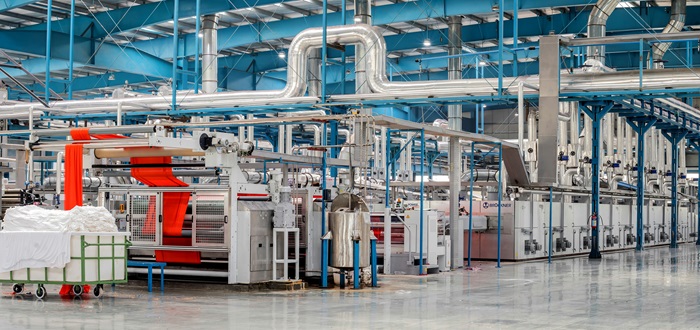
Lalit Kumar via Unsplash
In an era where global trends seem to be moving towards digitalisation and service-oriented economies, a surprising development is unfolding. Bucking the trend, foreign investment in the manufacturing sector is witnessing a significant surge. This article delves into this intriguing economic phenomenon, exploring the reasons behind this growth and its implications for the global economy. As we navigate through the complexities of international trade and investment, we’ll uncover why, contrary to global trends, manufacturing is attracting more foreign investors and what this could mean for the future of global manufacturing.
Overview by country
Foreign investment in manufacturing varies significantly by country, reflecting the unique economic conditions and policies of each nation. Here’s a brief overview:
United States: The U.S. saw an increase in its direct investment abroad position, with manufacturing affiliates having the largest increase. The foreign direct investment in the United States also increased, with affiliates in manufacturing and wholesale trade accounting for the majority of the increase.
China: Despite being known as the “world’s factory,” China received record-low Foreign Direct Investment (FDI) flows in 2023 due to ongoing geopolitical tensions and high interest rates.
Germany: Germany saw a significant increase in the position from Europe, with the largest increases from the United Kingdom and Germany. By industry, affiliates in manufacturing and wholesale trade accounted for the majority of the increase.
Brazil and Canada: Despite the general downward trend in FDI, Brazil and Canada were among the top three FDI destinations worldwide in 2023.
Examples
1. India:
Tesla’s decision to establish a plant in Gujarat, India is a notable example. Other international giants such as Samsung, Apple, Foxxcon, and Japanese automakers have also chosen to initiate manufacturing operations in India. Taiwan’s Foxconn, a global leader in the electronics manufacturing sector, has committed to invest a remarkable $100 billion in India.
2. UK
Magna International Inc: A Canadian company, Magna International Inc, invested £77.6 million to establish a new aluminium-casting factory in Telford to support Jaguar Land Rover. This investment is expected to create 295 jobs when at full capacity.
Northern England: Northern England has seen significant gains, with Yorkshire and The Humber landing 103 FDI projects which will create 7,378 new jobs – an increase of 97% on 2021/22 and 423% on 2020/21. In the North West and North East, 198 projects are set to create 8,867 jobs.
Featured image Raghu Nayyar via Unsplash


